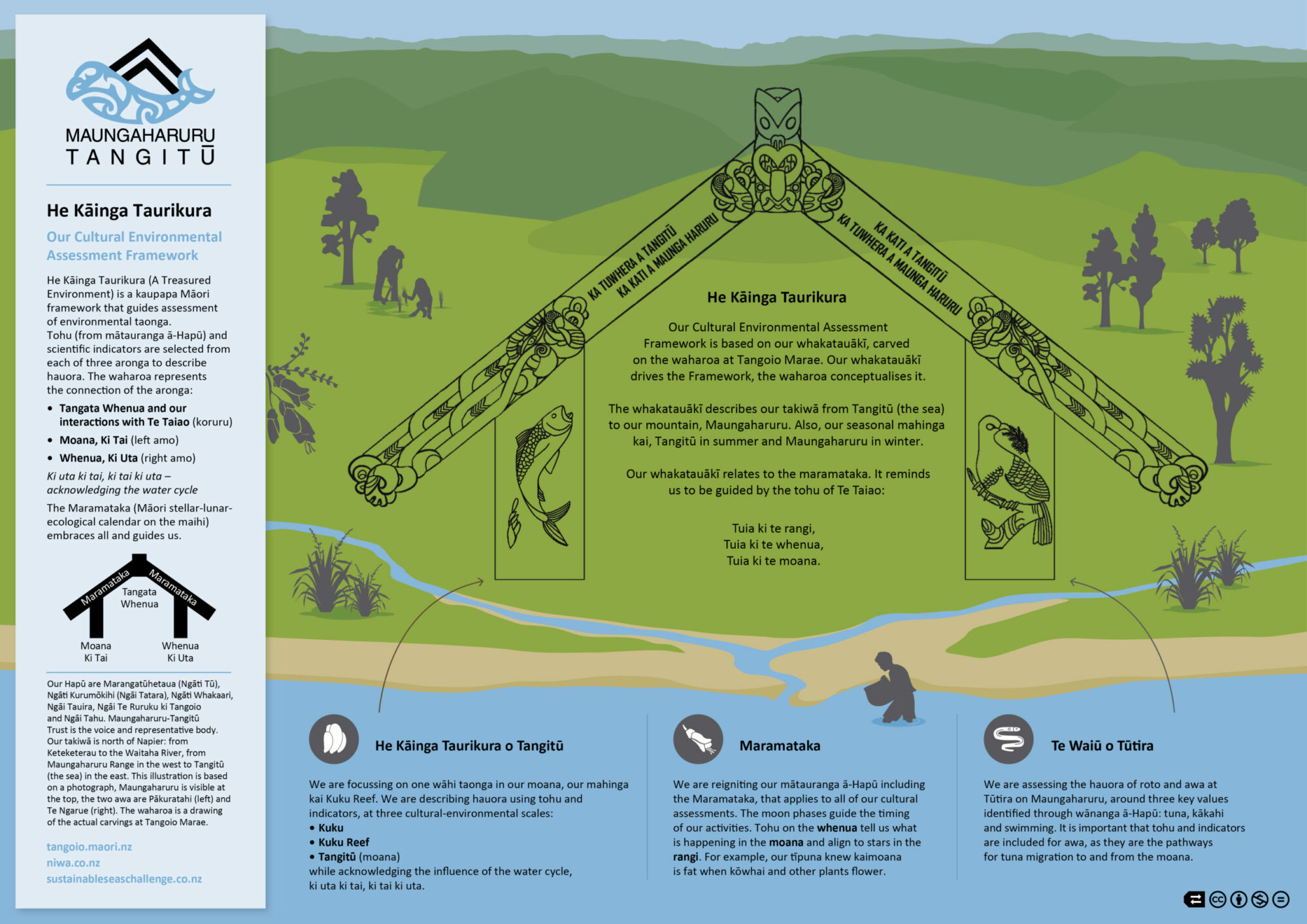
He Kāinga Taurikura o Tangitū
Cultural - environmental health assessment


Report
The project report, He Kāinga Taurikura o Tangitū , is designed for Maungaharuru-Tangitū Trust (the Hapū) and other hapū / iwi. Grounded in Kaupapa Māori principles, the project aims to enhance understanding of the Hapū connection to Tangitū (moana), Kuku Reef, and kuku. There were four project phases: developing the framework, knowledge sharing wānanga, applying science-based tools, final report with this Story Map. Based on the project's findings, and Cyclone Gabrielle's impact, we recommend the following four priorities:
- Reinvigorate mātauranga tuku iho and cultural values
- Strengthen relationships and enhance resourcing for building Hapū capability and capacity
- Address sedimentation and erosion
- Complement tohu monitoring with science data for a broader understanding.

He Kāinga Taurikura
This Cultural - Environmental Assessment Framework was conceptualised to guide and communicate the Hapū assessment of environmental taonga. We are describing hauora using tohu (from mātauranga tuku iho) and scientific indicators, at three cultural-environmental scales, Tangitū, Kuku Reef, Kuku. Also acknowledging the influence of the water cycle, ki uta ki tai, ki tai ki uta.
Area overview
– across Tangitū including Kuku Reef
Four areas were surveyed between Te Uku (north of Napier) and Punakērua. Rocky reefs were navigated using the Boxfish© underwater drone and then searched for populations of kuku. Where patches of kuku were found, videos were recorded, and high-overlap close-proximity images were taken to create orthomosaic images.
Recommendations
Through He Kāinga Taurikura o Tangitū project, four recommendations have been developed to inform the Hapū Implementation Plan, particularly considering the impacts of Cyclone Gabrielle and restoration efforts. These recommendations aim to incorporate an inclusive approach to environmental assessment and management.
‘Recommendation 4: Complement tohu monitoring with science data for a broader understanding’. This recommendation focuses on using science methods and indicators that are accessible to the Hapū and collaborating with relevant agencies.
Toitū te Whenua, Toitū te Moana, Toitū te Tangata
Ngā Mihi - Acknowledgements
Nā te ngākau oha o ngā mahi a ngā kaitautoko o te kaupapa i tutuki ai ngā wawata. I kura-takahi-puni tātau kia pai ake ai tā tātau noho i te ao nei. Mei kore koutou, mei kore koutou.
We acknowledge a range of people and groups that have contributed to this project.
From the Hapū: Kāhui Kaumātua, Te Tumu Tangitū, Hapū kaitiaki, Manu Tāiko, Justin Puna, Hayley Lawrence.
From NIWA: Kelly May (Marangatūhetaua), Stephanie Mangan, Leigh Tait, Rachel Hale, Henry Lane, Stuart Mackay, Louis Olsen, Jon Stead, Sean Handley. For reviewing elements and support of the project: Erica Williams, Tekiteora Rolleston-Gabel, Graeme Inglis.
Emilee Benjamin (University of Auckland), Cameron Ormsby (Aquaculture Environmental Ltd), Hayden Moffitt (Ocean Adventures).
Ko Ngā Moana Whakauka – Sustainable Seas National Science Challenge and Te Kūwaha (NIWA's National Centre for Māori Environmental Research) for funding.
